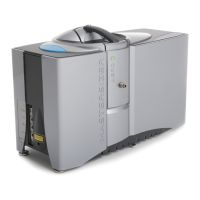Chapter 9 Advanced features
Page 9-2 MAN 0474
3. Save the SOP by choosing Save from the SOP Editor’s menu.
Alternatively, save the SOP as an SOP Template by choosing Save as tem-
plate. Refer to Creating and Editing an SOP in Making measurements
chapter for more information.
SOP Templates
SOP templates allow you to create SOPs based on predefined settings, improving
both the speed of creation and consistency. Effectively SOP templates are just
SOPs with additional, optional, metadata attached to them; a Name, Description,
Category and image. It is a good idea to create a template whenever the core set
-
tings of an SOP are to be used repeatedly.
The process of creating an SOP template is very similar to creating a standard SOP.
You can either create an SOP from scratch and then save it as a template, or open a
previously created SOP/template, make amendments to it and then save it. SOP
templates can be edited, saved as new templates or just saved as standard SOPs.
Note
SOP Templates are stored as .msot files in the Windows file structure. If
required, use the Workspace shortcut from the Workspace panel to locate
the SOP Template folder (the templates are organised in folders based on
any categories that users have assigned to the templates). If any associated
image is removed from the SOP Template folder, a default image is used
instead.
Creating an SOP template
1. From the Home ribbon select New-SOP.
2. Then select the appropriate template from the list (or From existing SOP...)
and click OK.

